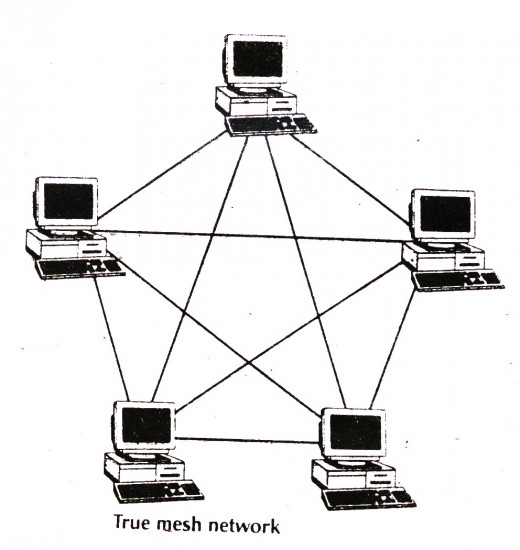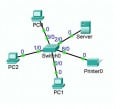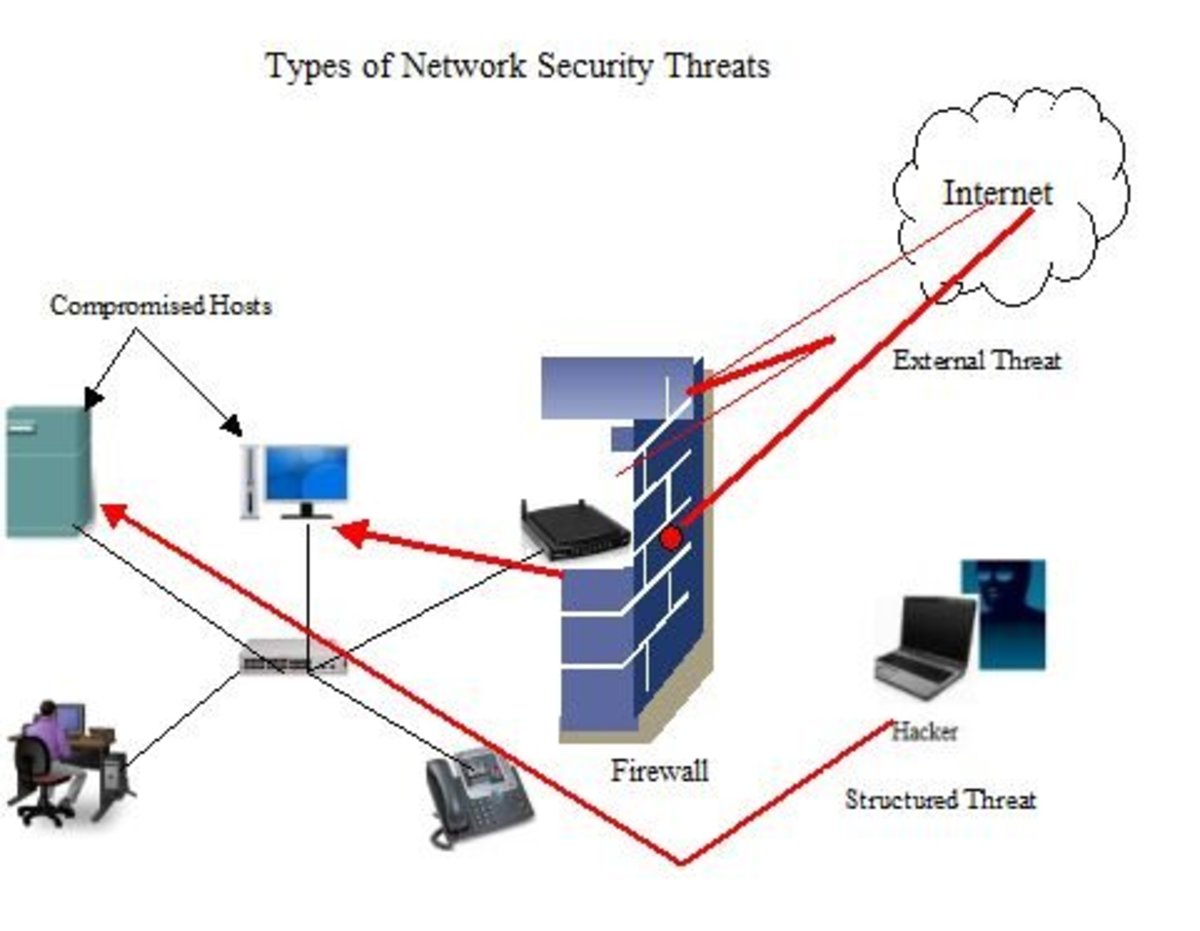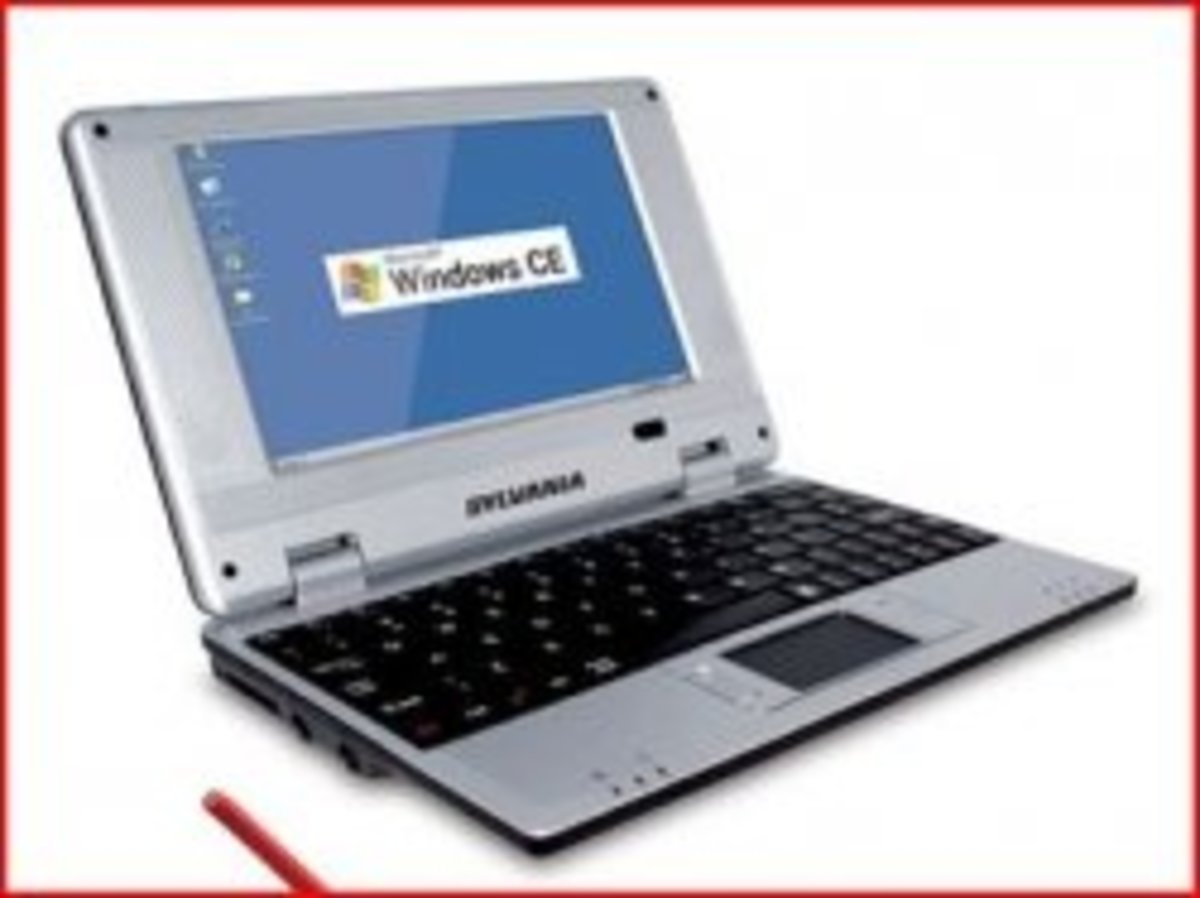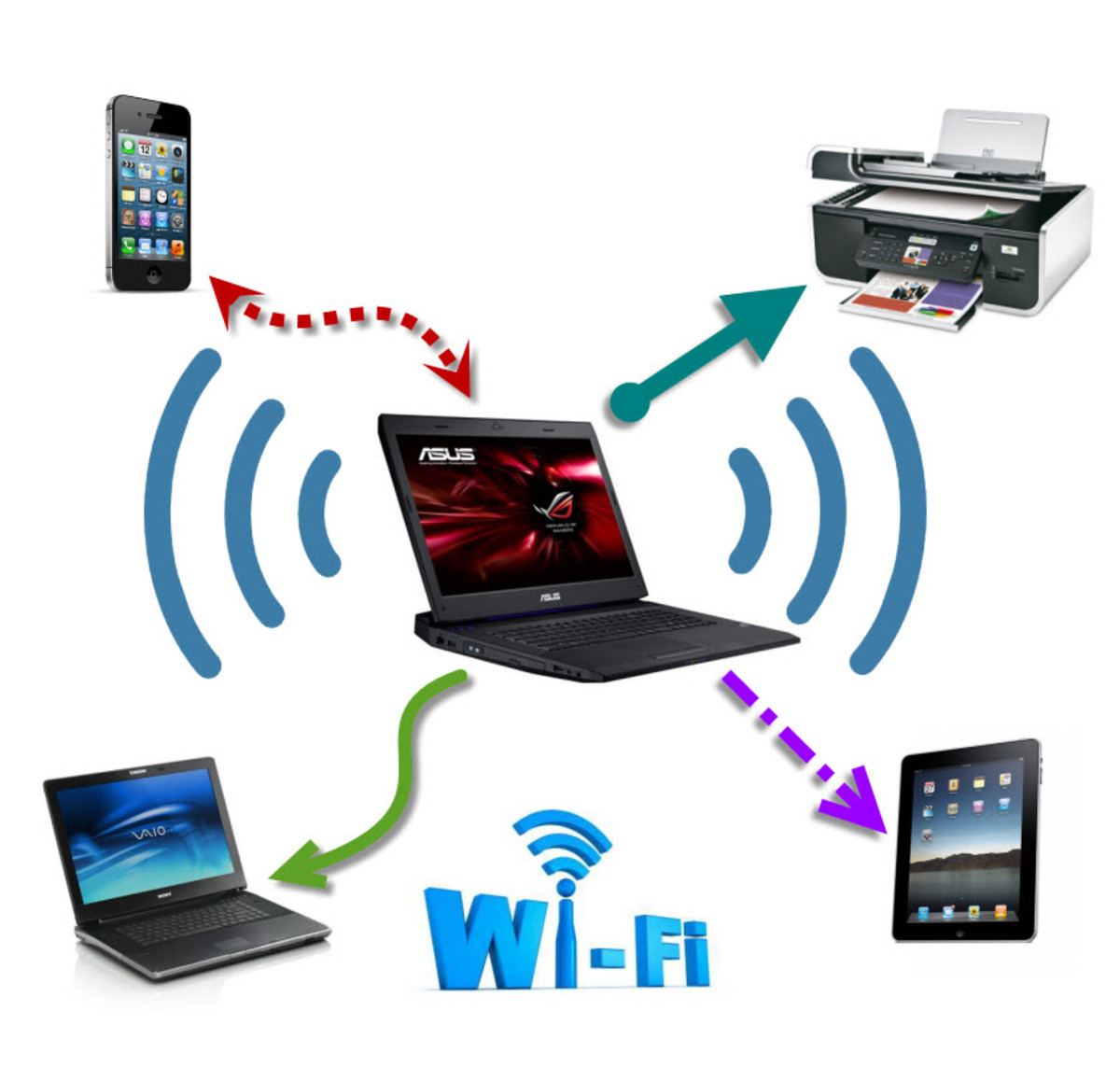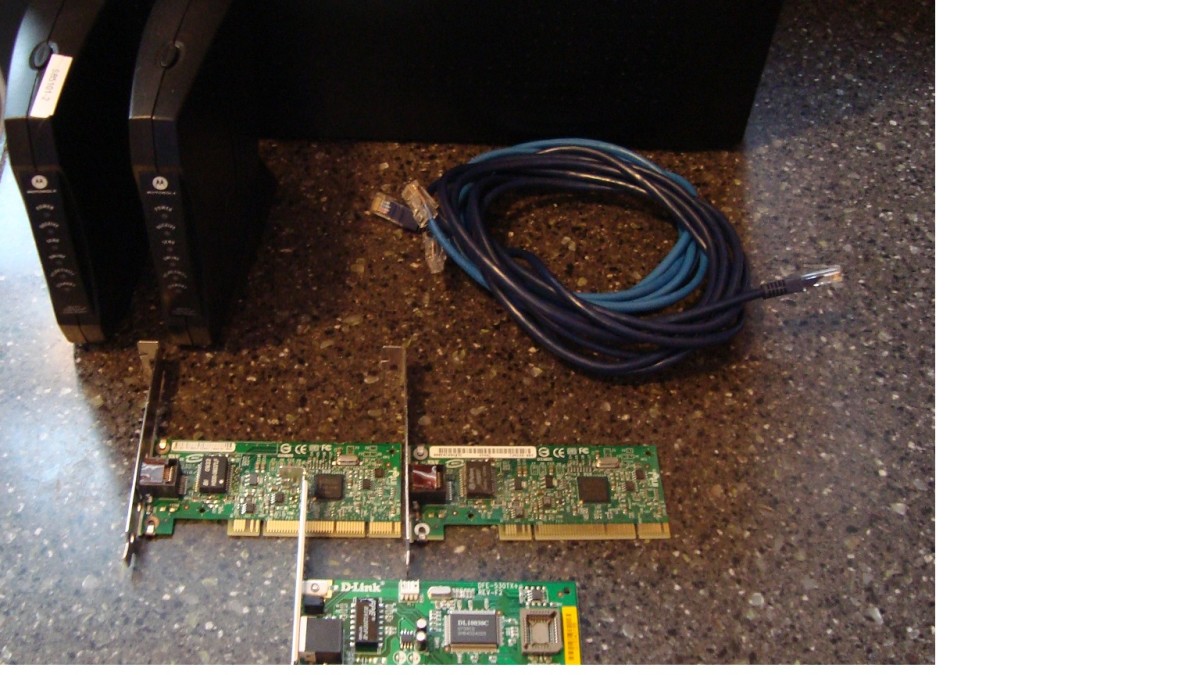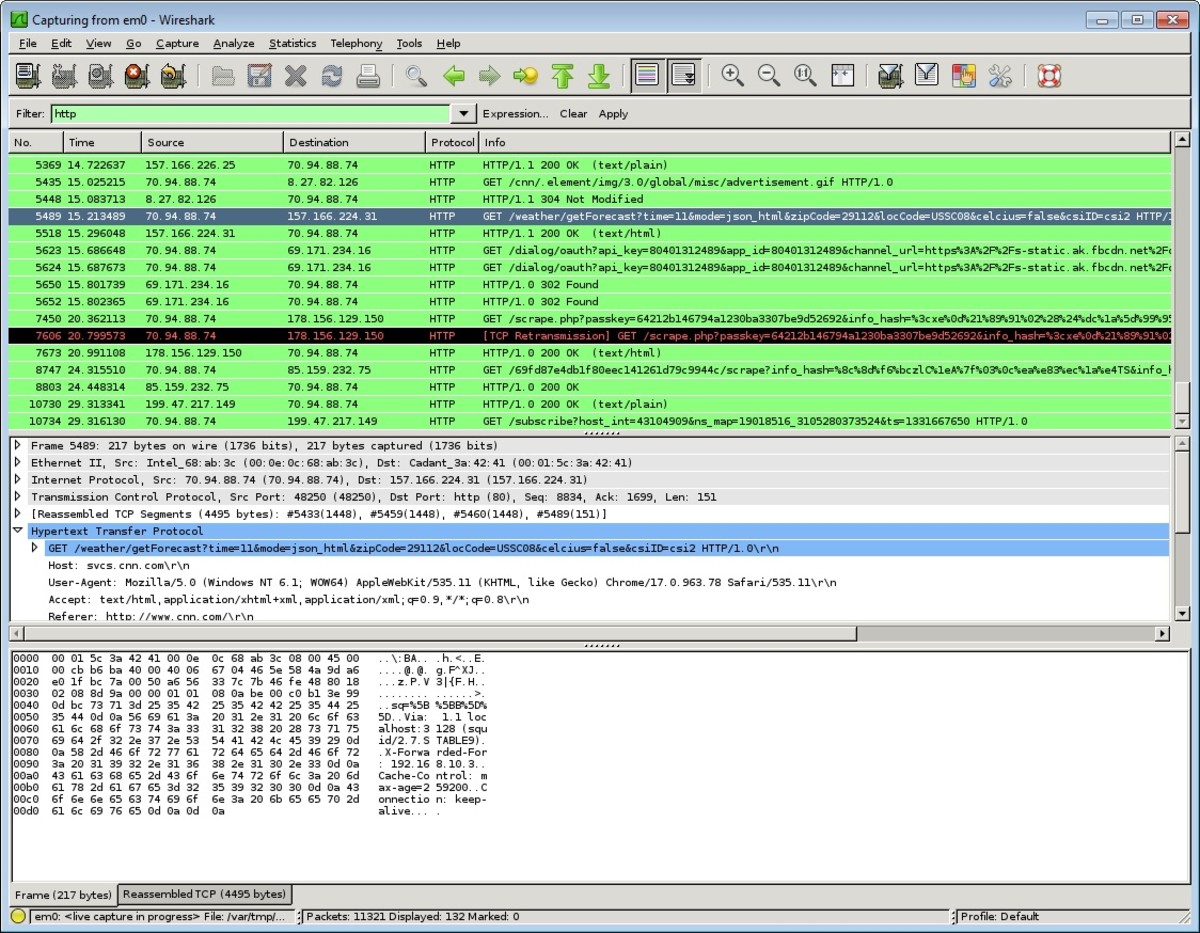- HubPages»
- Technology»
- Computers & Software»
- Computer How-Tos & Tutorials
Network Topology and Types of Network Topology
NETWORK TOPOLOGY
Two or more computers connected together through communication media form a computer network. The arrangement of computers in a network is called Network Topology. It is a physical layout of connected computer.
Following are network topologies.
1). Bus topology.
2). Star topology.
3). Ring topology.
4). Mesh topology
BUS TOPOLOGY
STRUCTURE of Bus Topology:
In the bus topology, the computers are connected through a common communication media. A special type of central wire is used as communication media. This central wire is called Bus. The computer are attached through the bus the ends of the bus are closed with the terminator .The terminators are used to absorb signals. Bus topology use coaxial cables sections are connected to the B. N. C connectors. B.N.C connectors are often use to connect the computer through the main cable. These connectors can connect through two section of cable with the bus extending in both directions. The end device on the bus have the terminals on one connectors of T
WORKING OF BUS TOPOLOGY:
The computers that send data also attach address of the destination computer with the data. All computers connected to the bus receive the data but only that computer accept it whose address matches the address attached with data.
In this topology only one computer at a time can send a data therefore the speed of network reduces as the number of computers attached to the bus increases.
ADVANTAGES of Bus Topology:
- Easy to install and configure
- Inexpensive
- Easily
extended
Disadvantages of Bus Topology :
- Performance decreases
- Weak signals
- Difficult troubleshooting
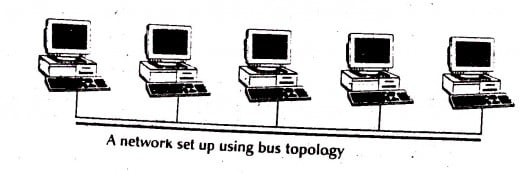
STAR TOPOLOGY
STRUCTURE of STAR TOPOLOGY:
The star topology uses a separate cable for each work station as shown in fig.The cable connects the work station to a central device typically a HUB. The configuration provides a more reliable network that is easily expended. With star there is no central point of failure in the cable .if there is a problem with the cable only the station connected to that cable is an effected .to add more work stations simply connect another HUB
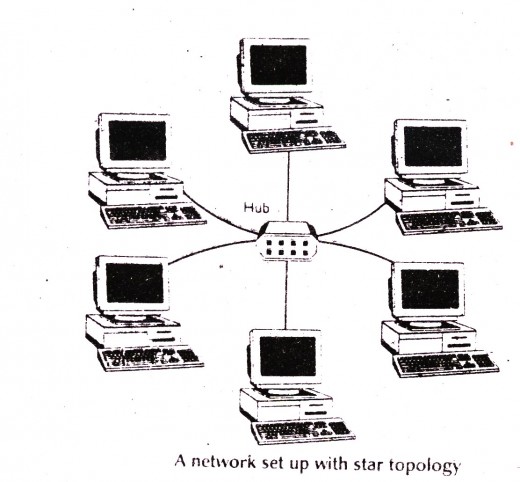
WORKING OF STAR TOPOLOGY
Each computer in a star network communicates with the central hub that resents the messages either to all computers (in a broadcast network) are only to destination computer (in a switch network).
Star network maybe designed to operate in a polled mode where each user is asked in turn .if it has any information to transmit and in case, if it has, the communication controller will either give full attention to that device until it has no more information to send or it will allow the device to send part of its information ,give another device a chance and then return back to original device.
ADVANTAGES of STAR TOPOLOGY:
- Easily expended and modified
- Easy to troubleshoot
- Multiple cable types supported by hub
DISADVANTAGES of STAR TOPOLOGY:
- If hub fails then entire network will fail
- Require more cables
- May require a device to rebroadcast signals across the network
RING TOPOLOGY
STRUCTURE of RING TOPOLOGY
In ring topology each computer is connected to the next computer and the last computer is connected to the first computer. Thus a ring of computers is formed as shown in figure below.
WORKING of RING TOPOLOGY :
Every computer is connected to the next computer in the ring and each transmits what it receives from the previous computer. The messages flow around the ring in one direction.
Some ring network do ring token passing. A short message called token (memory area)is passed around a ring until a computer wishes to send information to other computers. That computer modifies token, adds an electronic address and data and send it around the ring. Each computer in sequence receives the token and next computer until either the electronic address matches the address of a computer
Or the token return to its origin .The receiving computer returns a message to the sender indicating that message has been received.
ADVANTAGES of RING TOPOLOGY:
a. It provides an orderly network in which every device has access to the token and can transmit.
b. It performs well under a heavy load.
DISADVANTAGES of RING TOPOLOGY
a. Failure of one computer can effect the whole network .
b. Difficult to troubleshoot.
c. Change mode with adding or removing a device effect the entire network.
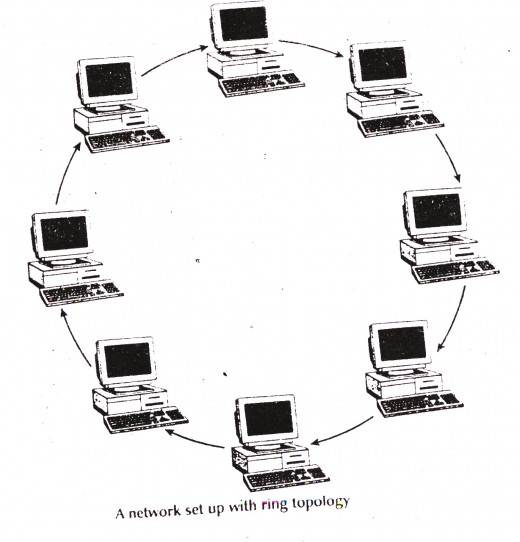
MESH TOPOLOGY
STRUCTURE of MESH TOPOLOGY
A mesh network or mesh topology uses separate cable to connect each device to every other device on the network, providing a straight communication path as shown in the figure below.
WORKING of MESH TOPOLOGY
For sending messages, check the cable connected into two devices. A message is send directly from sender to receiver because each one has individual and separate connection.
ADVANTAGES of MESH TOPOLOGY :
a. Enhance for error tolerance provided by redundant links.
b. Easy to troubleshoot.
DISADVANTAGES of MESH TOPOLOGY:
a. Difficult to install and maintain.
b. Expensive.
